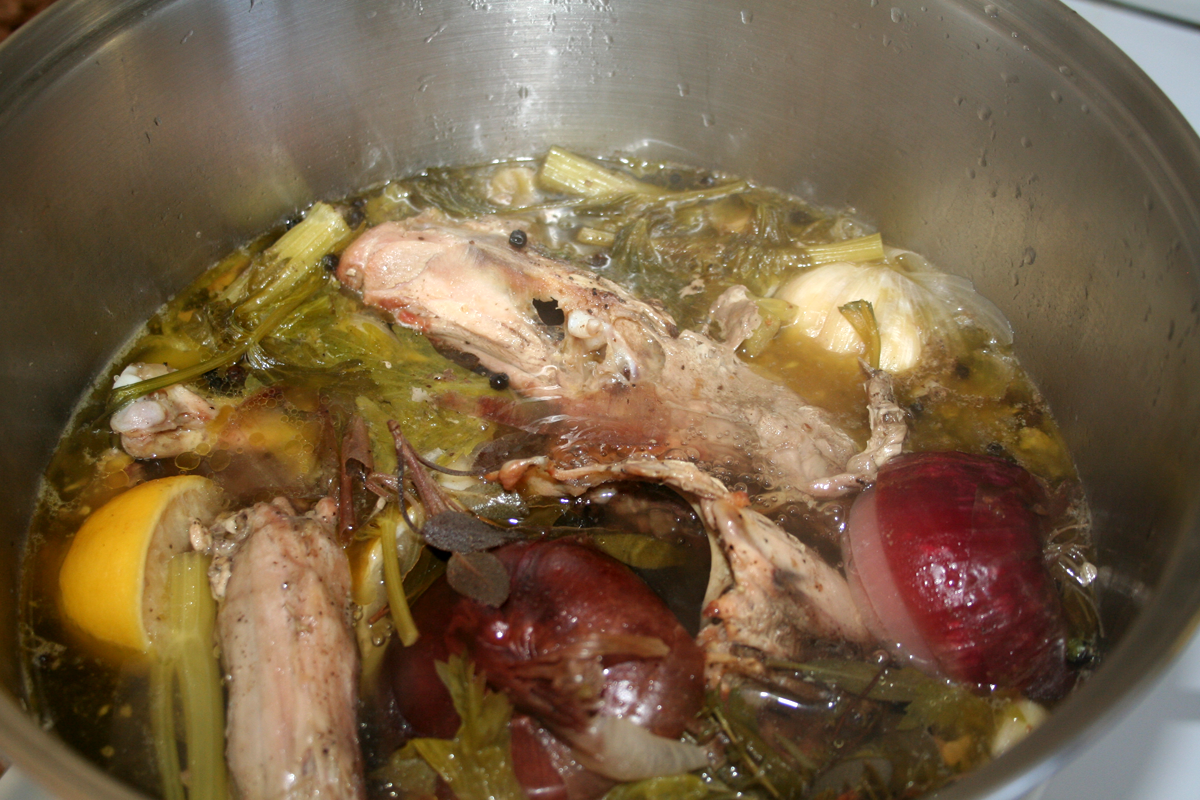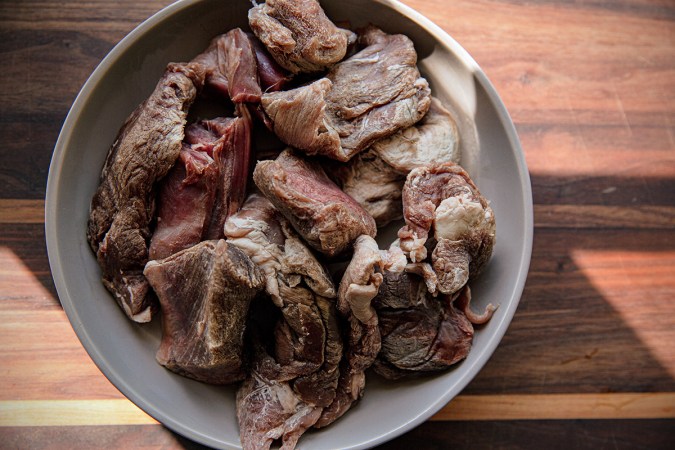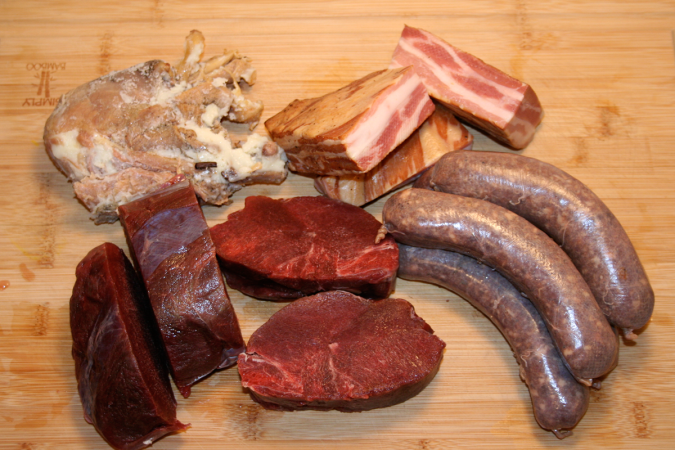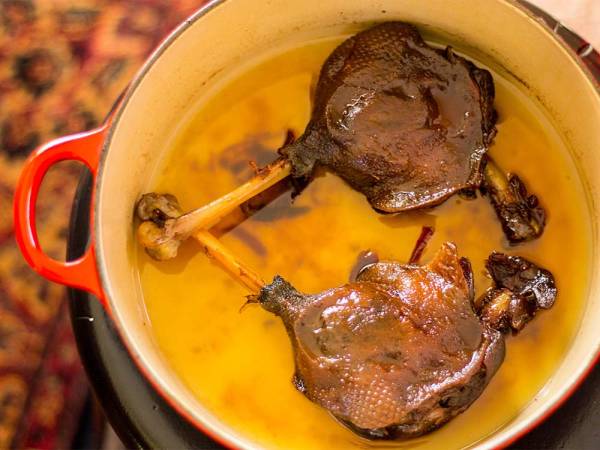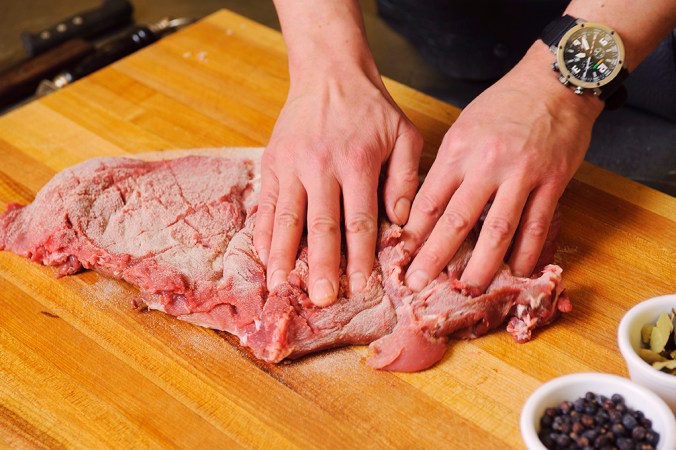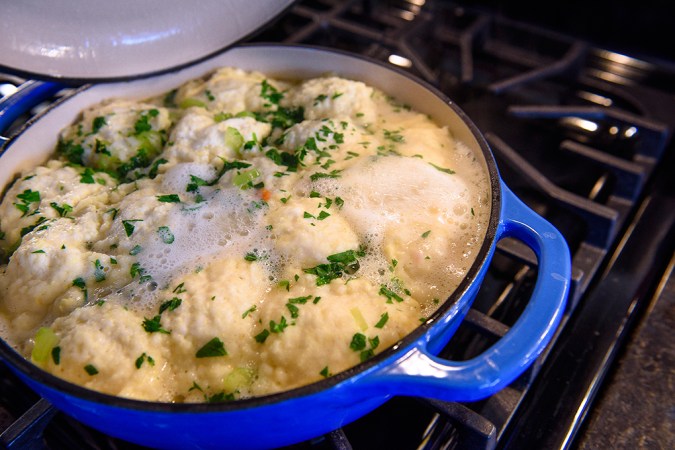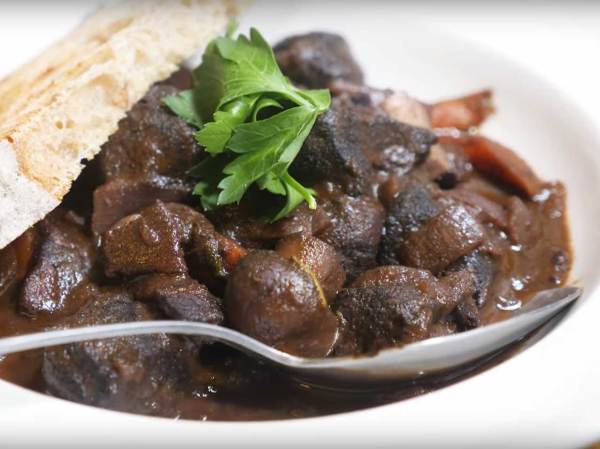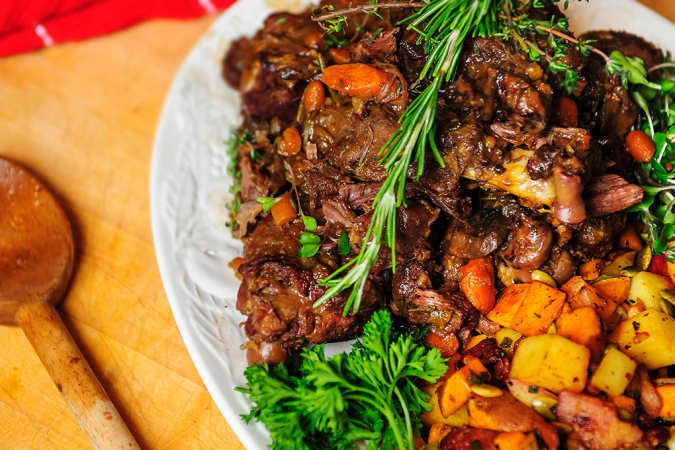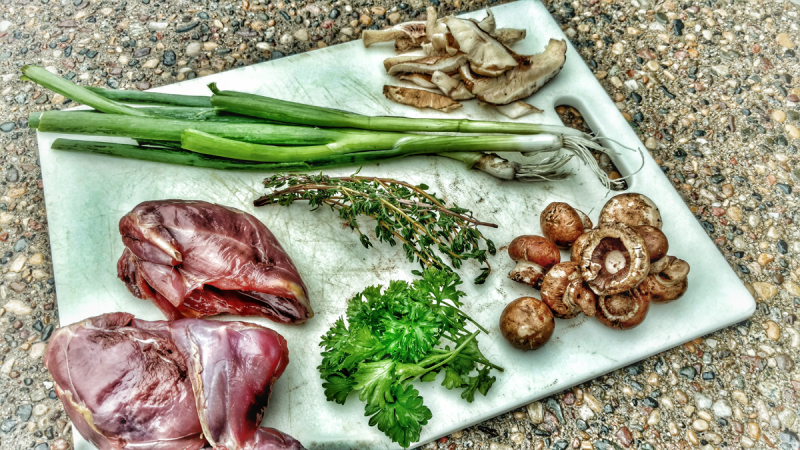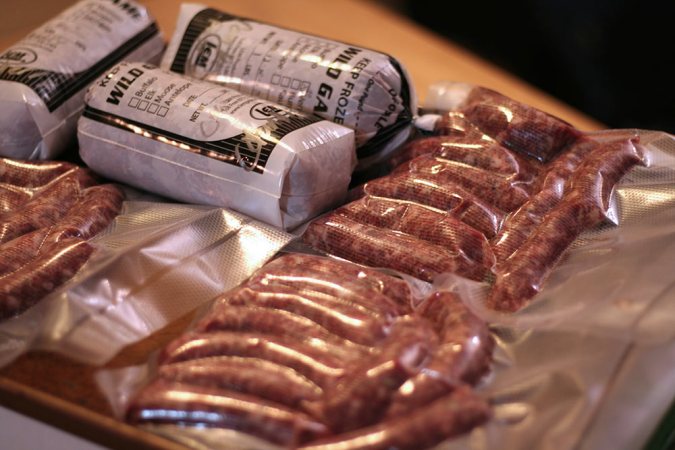I’m a big fan of using as much as I can of the animals I hunt. That goes even beyond cooking and eating the offal. One of the ways I do this is by making stock. Stock is a staple in any pantry, and we’re always buying it to add to soups and stews—so why wouldn’t we make it ourselves?
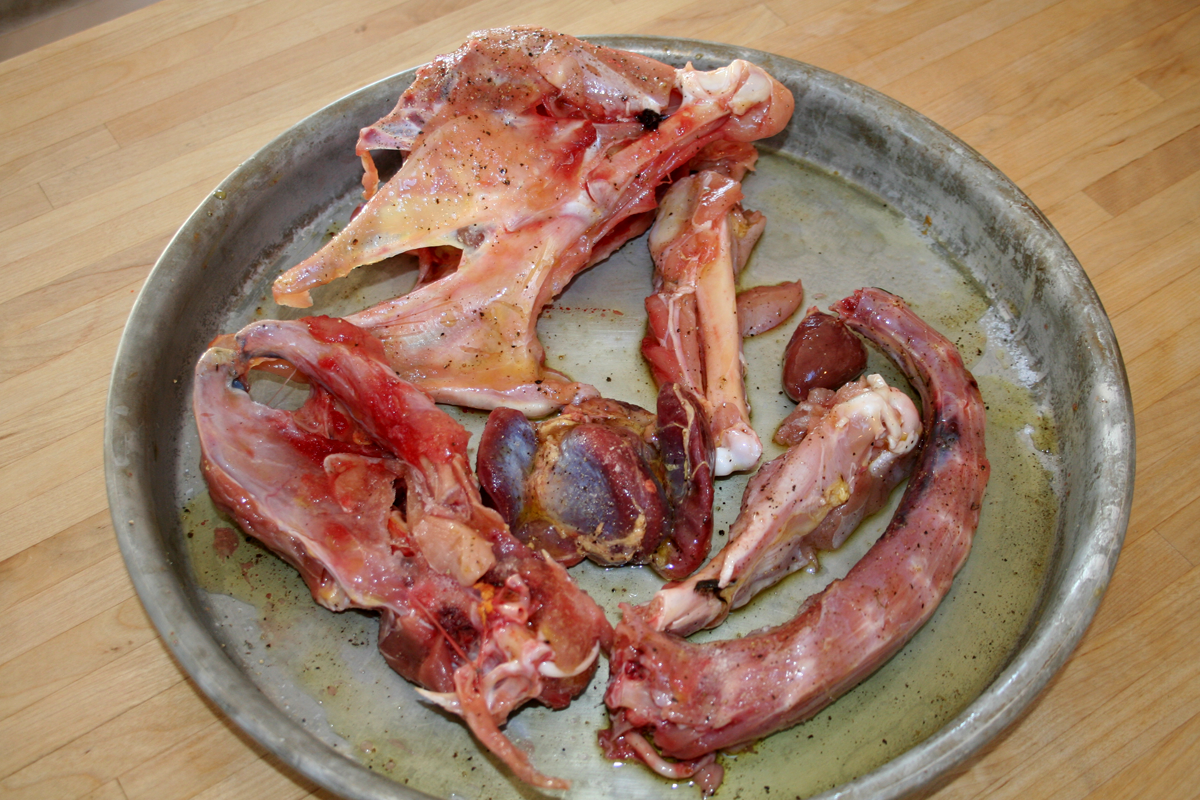
You can make stock out of just about anything you can get your hands on. I make stocks out of crayfish, mushrooms, deer, ducks, geese, pheasants…you get my drift. I have quart-sized plastic containers stacked up in my freezer, full to the brim of various stocks.
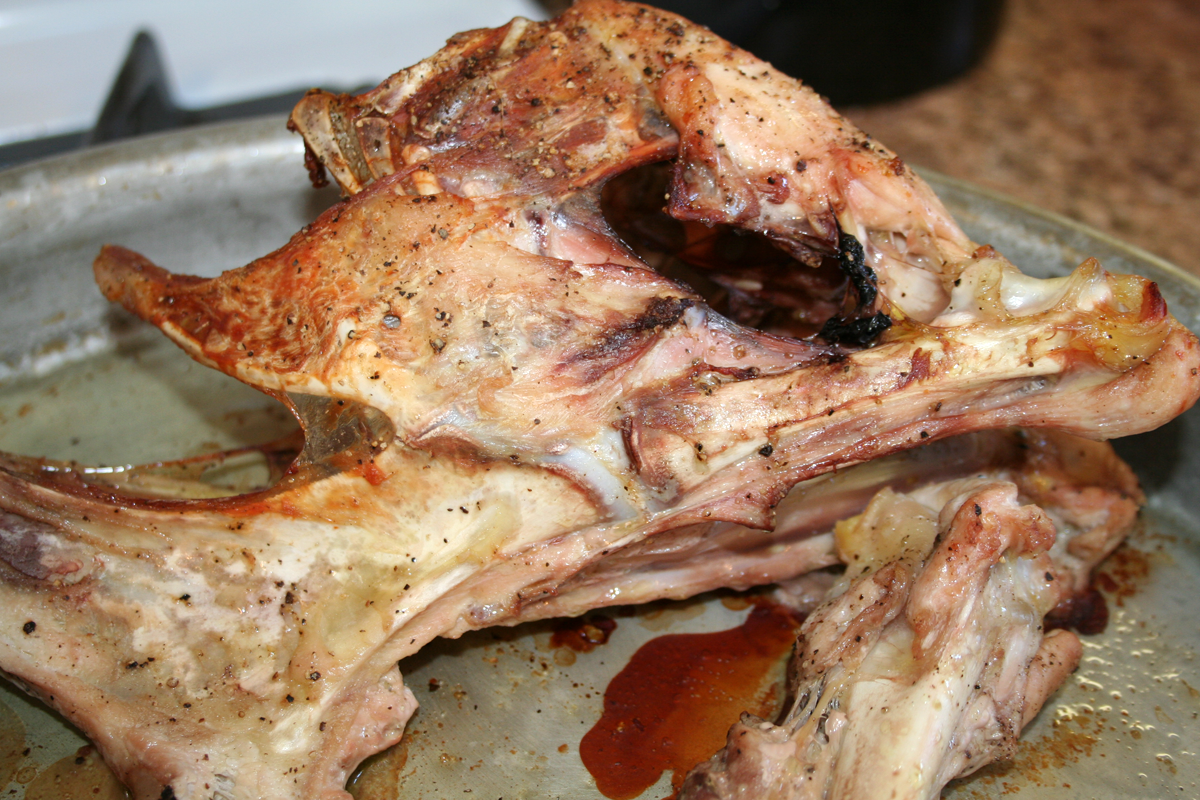
Making it’s very simple: all it requires is that you save the bones of the animals you hunt or the heads and spine section of the fish you catch. Once you have enough bones or fish, you just have to roast them. I usually toss my carcasses with a little olive oil and some salt and pepper, then roast them in the oven at 400 degrees for about 30 minutes. You don’t want to overcook the bones—just put a nice brown color on them. Once the bones are cooked, add them to a stock pot and cover with water. Simmer the bones in the water—be careful not to let the water boil. If it boils, it will release the fat into the water and become difficult to separate. At a very gentle simmer, the fat rises to the top and you can scrape off the fat and scum that floats on top of the water.
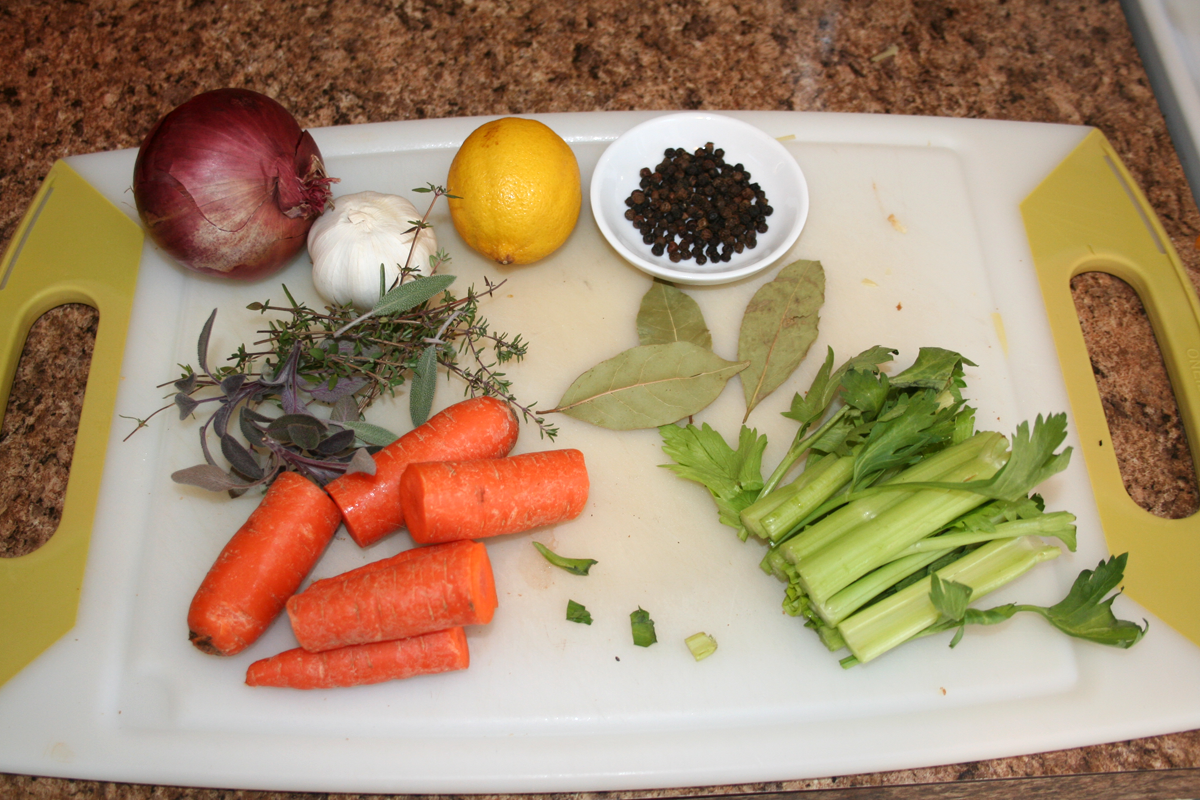
After about an hour of simmering you can add any desired aromatic ingredients to the stock. Add whatever you like. As a basic recipe, I always add a halved lemon, one onion, a head of garlic, some celery tops, a few carrots, bay leaves, black peppercorns, and whatever herbs. I like to choose herbs that compliment whatever bones I’ve chosen. For this turkey stock I used thyme, sage, and rosemary. When I make venison stock I usually throw in some juniper and a touch of tomato paste. (My point is that you can make your stock taste however you like it best.)
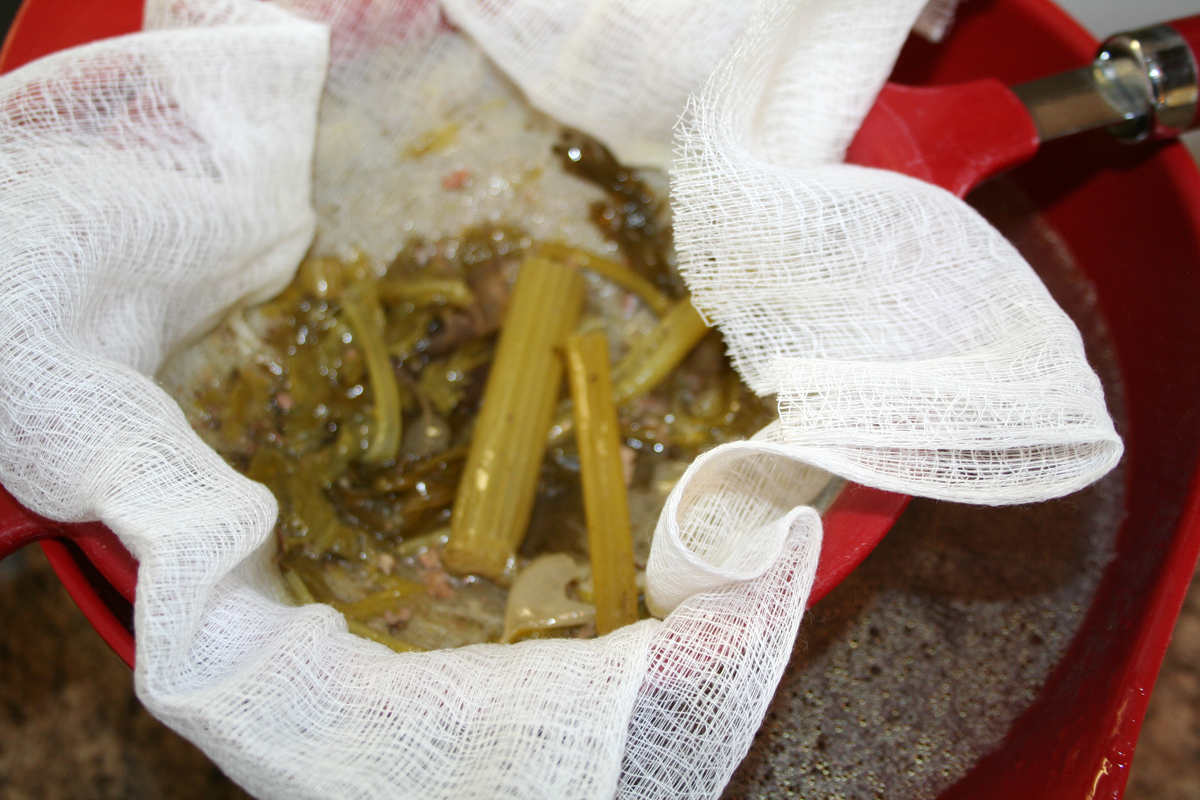
After you add the extra ingredients, continue to simmer for 2 hours. Next, strain the stock through cheese cloth and skim off as much fat as possible. Return the stock to your stock pot and heat on high to reduce the stock and concentrate the flavor. Pour the stock into your containers and place in the fridge until cooled completely. Any fat that is left in the stock should solidify on the top and can be scraped of before final storage.
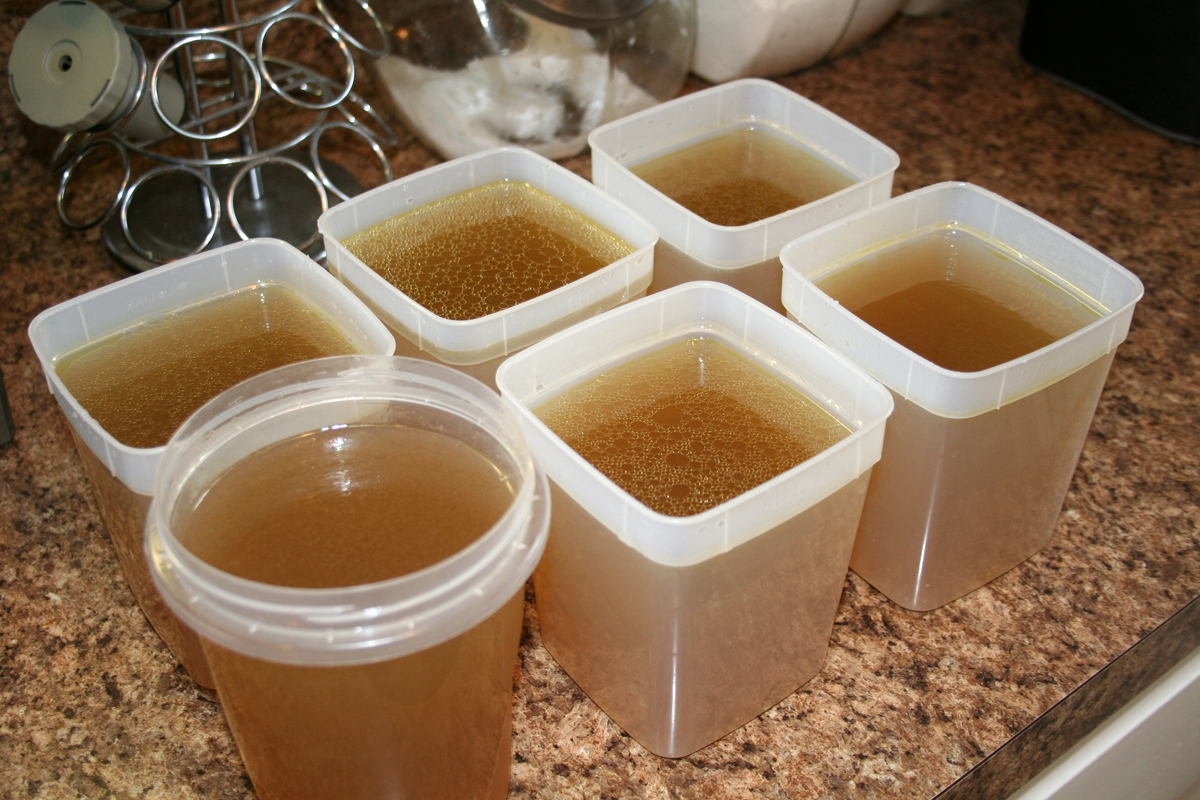
STORAGE
I like to freeze my stock in one-quart containers or pour it into ice trays and freeze it into cubes, then put those cubes in plastic freezer bags. That way if I only need a little bit of stock for a recipe I don’t have to thaw a whole quart.
You could also pressure-can your stock. You just fill glass jars with the stock and use the canner manufacturer’s suggestions to can the stock for long-term storage. The benefit to pressure canning is that you don’t use up freezer space. Once you have your stock finished it is then available to use in stews and soups or one of my favorite ways to use game stocks is to make a risotto.
